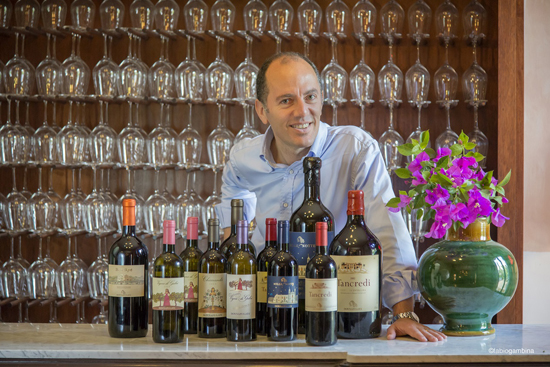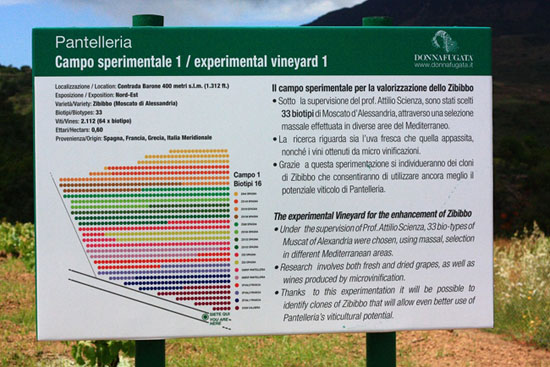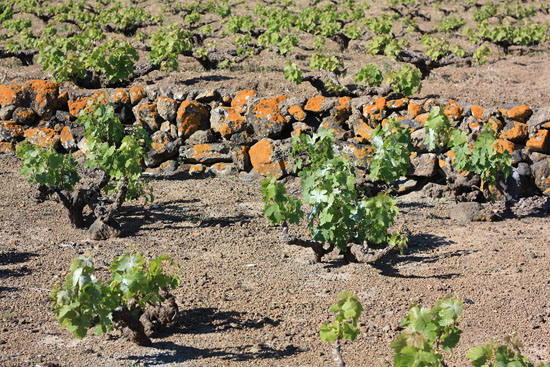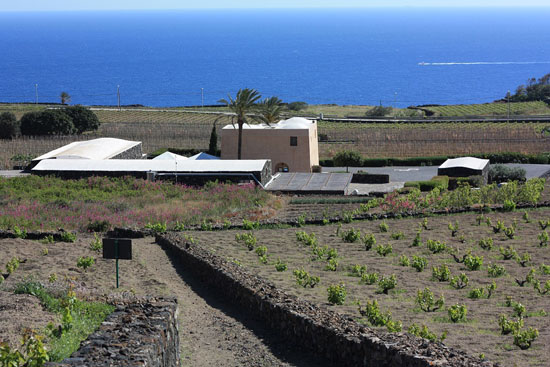by Deborah Parker Wong, DWSET
Archeologists researching the dietary habits of prehistoric Sicilians have discovered that wine was on the menu 6,500 years ago. The discovery made by a team of archeologists led by Dr. Davide Tanasi of the University of South Florida pushes the timeline for established viticulture in Italy back from the latter part of the Bronze Age (1600–1100 BCE) to the Copper Age (4500–3500 BCE).
While excavating a site on Monte Kronio in the Agrigento province in southwest Sicily, Tanasi found tartaric acid and its salts both of which are natural by-products of winemaking on unglazed pottery dating to 4500 BCE. It’s believed that the Mycenaean Greeks established viticulture in Sicily during the Bronze Age but the discovery has unearthed a much earlier point of origin for Italian wine culture.
As the history of winegrowing in Sicily continues to evolve so do the efforts of forward-thinking producers who are working to preserve the island’s native grape varieties. Sicily’s indigenous grape varieties differentiate its wines from those in the rest of Italy and the Iberian Peninsula and, based on Tanasi’s findings, they are likely the very origin of Italy’s wine culture. The grape varieties indigenous to the island many of which were originally used to produce Marsala are gaining a new lease on life as delicious, light, dry wines.
Monte Kronio is located in the modern-day winegrowing region of Sciacca which along with the communes of Contessa Entellina, Menfi, Montevago, Santa Margherita and Belice comprise the Terre Sicane sub region. Research projects are being undertaken here and across Sicily to identify clonal material and insure the diversity of the island’s native vitis vinifera is both preserved and celebrated. While Tanasi and his team are determining if the wine of the ancients was white or red, we can enjoy their modern-day equivalents.
At their familial estate in Contessa Entellina, Antonio and José Rallo, the brother and sister team of Donnafugata, are cultivating and vinifying 30 biotypes of 19 different grape varieties as part of a study designed to identify clones that are best suited to the region. Massal selection vines were planted in 2009 and the winery has been analyzing the flavor profiles of the grapes including the varieties Nocera, Vitarolo and Alzano which are described by the project as “relics” to validate their potential.

Donnafugata’s Antonio Rallo is an advocate for Sicily’s native varieties.
PHOTO COURTESY OF DONNAFUGATA.
According to agronomist and winemaker Antonio Rallo, the varieties Cataratto, Damaschino, Grecanico, Grillo, Inzolia and Periccone are those most likely to be indigenous to the Terre Sicane sub region. “From the experimental vineyard at Contessa Entellina we’ve propagated Cataratto biotype A and Nero D’Avola biotype A and will begin production with these grapes in a few years,” he said. “We’ve also propagated Nocera, an ancient red variety with deep, stable color, which we believe has great potential.”

30 biotypes of 19 different grape varieties.
PHOTO: DEBORAH PARKER WONG
The trial at Donnafugata includes two biotypes of the white variety Inzolia which is the Sicilian name for Ansonica, a variety according to author and Italian native grape expert Ian D’Agata very likely to be indigenous to the coastal region of Sciacca. It’s closely related to other Sicilian varieties including Grillo, Frappato and Nerello Mascalese which are all known to be native to the island. Widely appreciated as a table grape, Inzolia is naturally tannic and lower in acidity. The variety was most commonly used in the Marsala blend as the grape is well-suited to this oxidative wine style.
Inzolia grown at Donnafugata’s Contessa Entellina estate plays a role in characterful white blends including Damarino and Vigna di Gabri, named for founder Gabriella Rallo, where it’s blended with a small percentage of the indigenous Cataratto and Chardonnay.
Sicily’s dozens of native varieties are showcased at the annual Sicilian en primeur tasting hosted by Assovini Sicilia, as association of 70 winery members founded in 1998 upon the inspiration of Diego Planeta (Planeta Estates), Giacomo Rallo (Tenuta di Donnafugata) and Lucio Tasca d’Almerita (Conte Tasca d’Almerita).
In 2016, more than 800 wines were presented among them several notable monovarietal and Inzolia-dominant blends. Cusumano’s Cubia Tenuta Ficuzza, a richly–textured standout with bright, flinty lemon, and an Angimbé Chardonnay blend, Zonin’s Feudo Principi di Butera Inzolia, Donnafugata’s eponymous Vigna de Gabri, Baglio di Pianetto’s Ficiligno, a minerally Viognier blend, and Principe di Corleone Pollara’s Bianca de Corte Chardonnay blend.
Rallo’s commitment to the research and preservation of native varieties includes Zibibbo or Muscat di Alexandria which is grown under extremely harsh conditions at the winery’s estate on the island of Pantelleria.
Through the efforts of Rallo and the Assovini Sicilia, the production of Zibibbo on Pantelleria gained UNESCO heritage status in 2014. Vineyard architecture on the wind-battered island demands albarello pantesco, the use of low, head-trained vines, a system of terrezzai muretti or dry stacked terraces and the use of windbreaks known as franzi vento.

Donnafugata’s estate on Pantelleria.
PHOTO: DEBORAH PARKER WONG.
From its estate vineyards which are planted to ungrafted, centenary Zibibbo vines, Donnafugata produces two signature wines: Ben Ryé, a world-class Passito di Pantelleria sweet wine made from macerating a ratio of four kilos of raisined Zibibbo berries to one liter of fresh must, and a superb light, dry wine, Lighea (mermaid) with pronounced jasmine, green tea and ripe green fruit flavors.
The winery is conducting a clonal research project of 33 biotypes of Zibibbo collected by massal selection from Spain, France, Greece and the Italian mainland which is being supervised by Professor Atilio Scienza. “These experimental vineyards were planted in 2010 and we think it’s too early to begin evaluating the potential of each biotype,” said Rallo.

On a clear day the coast of Tunisia can be seen on the horizon.
PHOTO: DEBORAH PARKER WONG.
Varieties currently being trialed by Donnafugata:
Albanello
Alicante
Alzano
Damaschino
Carricante
Cataratto
Frappato
Grillo
Grecanico
Inzolia
Malvasia della Liparia
Minnella Nera
Moscato Bianco
Nero d’Avola
Nerello Mascalese
Nerello Cappuccino
Nocera
Periccone
Vitrarolo
Zibibbo
